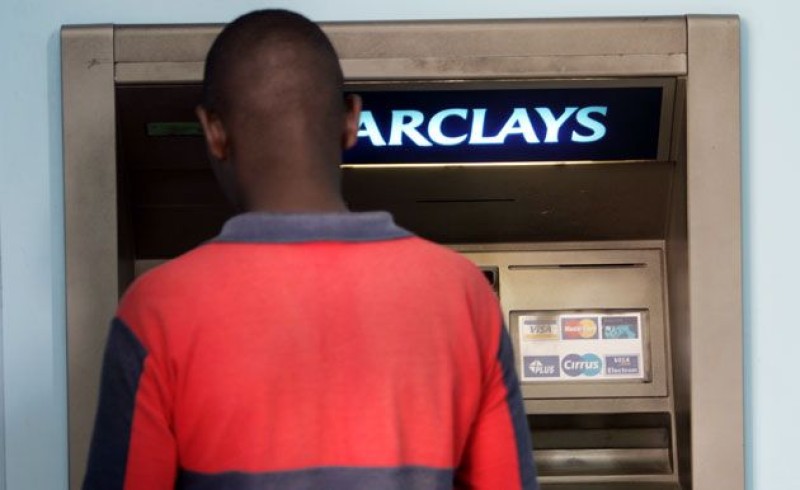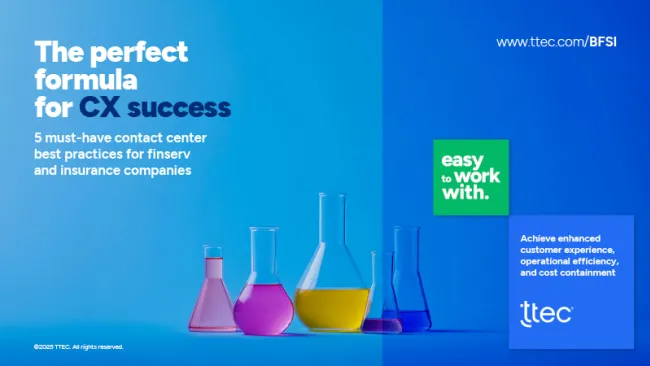While often good for the bottom line, mergers and acquisitions have the potential to wreak havoc on customer experience. Different products and services must integrate, along with separate business processes, employee cultures, and levels of customer centricity. The expectations of one set of customers is likely different than the expectations of the other. Yet it's rare for the customer perspective to play a large role in the merger beyond a glance at customers' current financial value. This can lead to customer dissatisfaction, followed by attrition and failed projected financial benefits once a merger is complete.
The banking industry especially needs to be conscious of this reality. Bank mergers are en vogue in the aftermath of the financial crisis. Yet a recent study from Maritz Research reveals that only 43 percent of customers who have joined a bank through an acquisition believe they are better off after the merger. Customer relationships before, during, and after bank mergers are very fragile and need to be handled with care.
This fact was not lost on British bank Barclays when it acquired a 55 percent stake in Absa Group in July 2005. This stake was increased to 62.3 percent with the merger of the Barclays Africa operations initiated in 2012 and concluded in July 2013 in a deal worth R18.3 billion (US$1.8 billion). The new company, Barclays Africa Group Ltd., serves about 14 million customers in Africa operating in Botswana, Ghana, Kenya, Mauritius, Seychelles, Tanzania, Uganda, Zambia, and Mozambique, and it retains the Absa brand in South Africa.
Barclays CEO Antony Jenkins has stated publicly his commitment to improve the customer experience for all of Barclays as it grows, including the newly merged Barclays Africa. In January 2013 he announced the launch of the Transform program, which is designed to make Barclays the "go-to bank" for customers. "For me the go-to bank is about being a place that customers and clients naturally come to when they want to do banking. It's no more complicated than that," Jenkins said in a corporate video.
The Transform program is based on five values that are shared among all employees around the world: respect, integrity, service, excellence, and stewardship. The words are backed by organizational changes led by senior management and a compensation structure that rewards a more customer-focused enterprise. "For our values to have true meaning, employees need to live and breathe them," Jenkins said in a statement.
Such a directive helps employees of Absa and Barclays as they transition into their newly merged company. It gives them a shared sense of purpose and a foundation on which to build the new entity.
Mandating customer centricity
"Customers have a lot more choice," says Ina Steyn, head of customer care for Absa Bank. "The balance has shifted. If we want to become the go-to bank globally, we have to prove that we put customers at the center of all aspects of our business."
"It's a goal not just for Barclays, but for the industry as a whole," adds Pieter Steyn, a research specialist for Absa who manages many of its customer metrics programs. "Customer centricity follows great leadership. It can't be a project; it must be a cultural change. It must be leader-led, involve the staff, and customers will follow it. You cannot fake it."
Prior to the merger, Absa had already established a reputation for being customer-focused among South African companies, sitting in the top three in 2012's RepTrack Pulse survey. But the banking sector overall needed some outside reinforcement. In 2011, the Financial Services Board introduced a Treating Customers Fairly (TCF) model, mirroring a similar consumer protection policy in the UK. It stipulates that regulated financial organizations have until 2014 to meet six customer principles, or "fairness outcomes," that include providing products and services that meet customer expectations, communicating clearly and transparently, and limiting barriers if customers want to change banks.
Already, the company has initiated a number of customer-based initiatives designed to enhance the customer experience and follow through on Jenkins's vision of becoming the go-to bank. Customer complaints are key to making or breaking a relationship, for example. Absa, working with Peppers & Rogers Group in 2010, looked to optimize its complaints processes. The company enhanced its complaints processes to ensure the coordination of multiple channels, sharing customer information as they moved from one channel to another within South Africa.
The goal of the new Barclays Africa Group is to create a single system across Africa, so customers can get their issues resolved faster and have a consistent and convenient experience across any Barclays/Absa branch, ATM, or other channel. For example, an Absa customer who might be in Kenya on business can visit a Barclays branch to have a complaint logged and resolved.
Looking to be more proactive with customers, the organization is investing in understanding root causes of issues to stem future dissatisfaction or confusion. Absa now reviews and prioritizes the top complaints for different customer segments, as well as all channels. The team isolates root causes by combining insights from data analysis, stakeholder meetings, voice-of-customer verbatim, and other sources, and then offers recommendations on how to eliminate the root causes.
"We take everyday customer complaints and ask them more in-depth questions about "why" to give us context and a deeper understanding of the issue," Ina Steyn says. "We look at the entire value chain."
Each of these programs involves multiple departments and a lot of different data sources. There is a dedicated team in the COO's office that is focused on streamlining processes, Ina Steyn says. "The ultimate goal is to make life easier for customers. For example, we have managed to reduce the home loan cycle time from 13 days to four days and achieved industry-leading ATM availability times."
Internal progress
As the new company moves forward, internal buy-in from the 45,000 Barclays Africa staff is critical to keep momentum strong. "Looking at the merger, we needed to create excitement with the staff," Ina Steyn says.
As part of the effort to align globally, employees are nominated by colleagues and rewarded for actions that tie to Barclay's five values, particularly above-and-beyond customer service. In addition, some employees spend three-month rotations working in offices elsewhere in the world, moving up to six times within 18 months. This gives them a chance to learn from their colleagues, meet new customers, and share best practices across regions.
Also, the company organizes a monthly TCF best practices forum to discuss what's working and how that can be replicated in other offices. For example, South Africa has a large rural population, and Absa has created portable banks to serve customers within those areas. The company drops off a trailer containing complete branch services in a village for a certain amount of time, essentially taking the bank to customers. The company is looking to expand the program to rural areas elsewhere in the world.
"The key is sharing," Pieter Steyn says. "But it's also important to recognize that the best practice in one country isn't necessarily a best practice in another country. The local culture has an important role to play."
Of all the tenets, mission statements, and pillars related to the merger, the key to a sustainable customer-centric business is the staff, Ina Steyn says. "If staff is happy, this will transfer through to customer." She advises others to look at how to improve staff engagement by offering career development opportunities, empowering them to innovate, and exposing them to different parts of the global business.
She also says that as the new company solidifies, it's important that the staff understand the journey the company is on. "People feel that they're part of a common purpose, and that they play a part in delivering the value to customers."















